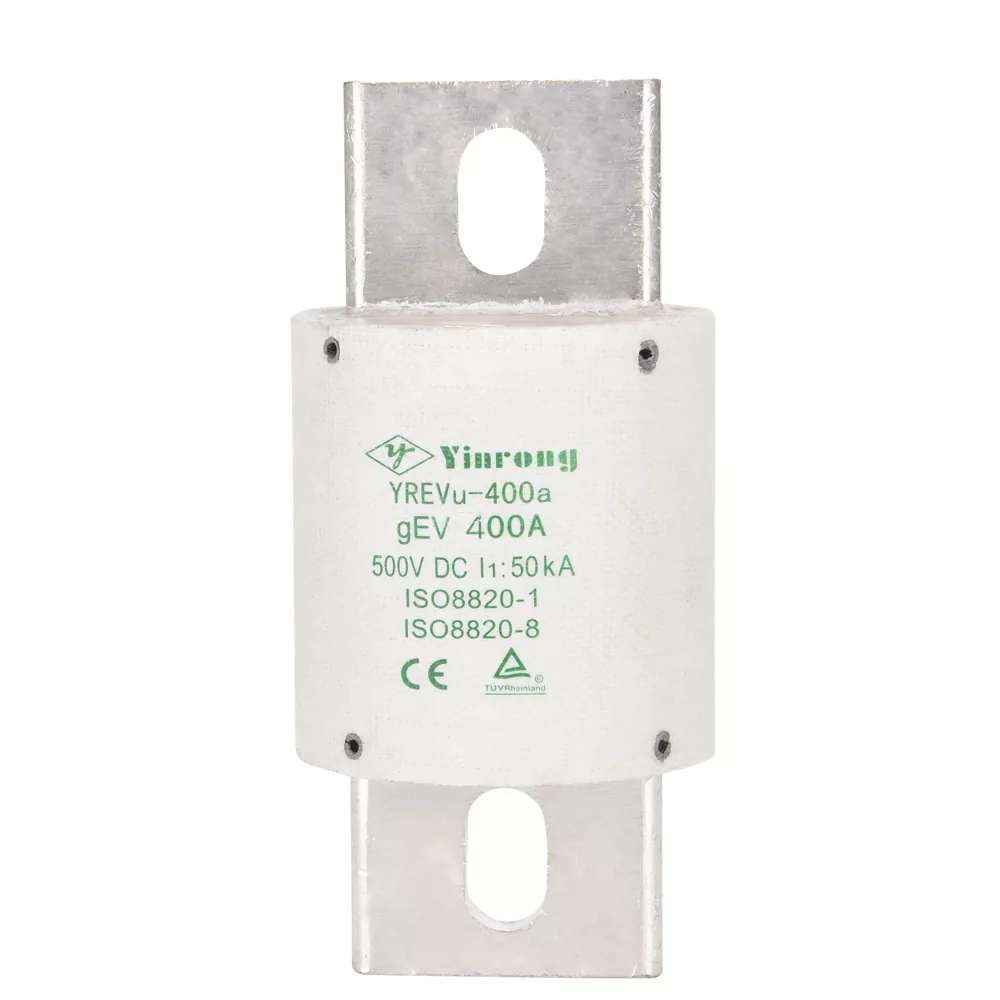Understanding Electric Vehicle Fuse Applications
2024-11-12
Electric vehicle (EV) fuse applications are essential for protecting various electrical components and systems within an EV. Fuses in EVs safeguard against overcurrent, short circuits, and potential damage to sensitive electronics, ensuring safe operation of the vehicle’s power systems. Here’s a breakdown of how EV fuses work, their key applications, and the considerations for selecting the right fuses in EVs:
How EV Fuses Work
EV fuses are designed to break the circuit when excessive current flows through, effectively stopping the power supply and protecting components from damage. In an EV, fuses must handle higher voltages and currents than those in traditional vehicles due to the electric drivetrain, high-capacity batteries, and complex electronic control systems.

Key Applications of EV Fuses
1. Battery Protection
- EV batteries produce high voltages, typically ranging from 200V to over 800V.
- Fuses protect the battery pack from overcurrent conditions, which could otherwise lead to overheating, fire hazards, or even battery explosions.
- They help in isolating sections of the battery pack during faults to minimize damage.
2. Powertrain Components
- Powertrain fuses safeguard high-voltage components like the electric motor, inverter, and DC-DC converter.
- These fuses help prevent damage to the motor or power electronics due to high-current situations, preserving the overall integrity of the drivetrain system.
3. Charging Circuit Protection
- During charging, especially at fast-charging stations, high currents pass through the charging circuit.
- Fuses in the charging system protect against faults that may occur due to unstable power sources or surges, ensuring the safe transfer of power from the charging station to the battery.
4. DC-DC Converter Protection
- EVs use DC-DC converters to step down the high-voltage battery power to lower voltage levels for auxiliary systems.
- Fuses on the DC-DC converter circuit protect against overcurrents, safeguarding lower voltage components, such as lighting and infotainment systems, from damage.
5. Thermal Management Systems
- Thermal management is crucial to maintaining battery temperature and overall EV efficiency.
- Fuses protect pumps, compressors, fans, and other parts of the cooling or heating systems to ensure they run smoothly and safely.
6. Auxiliary Systems and Accessories
- Auxiliary systems like heating, ventilation, and air conditioning (HVAC), lights, and control modules require low-voltage fuses.
- These fuses isolate auxiliary circuits during faults without affecting the main EV systems, enabling continued vehicle operation.
Considerations for EV Fuse Selection
- Voltage Rating: EV fuses must handle high DC voltages, often much higher than standard automotive fuses.
- Current Rating: Selecting a fuse with the appropriate current rating is crucial to prevent nuisance blows while providing sufficient protection for each component.
- Interrupt Rating: This refers to the maximum current the fuse can safely interrupt without failure. EV fuses require high interrupt ratings due to the potential for high fault currents.
- Response Time: Different systems may need fast-acting or slow-blow fuses depending on the nature of the current draw and sensitivity of the components.
- Thermal Resistance: Since EVs generate significant heat, fuses must be capable of withstanding high temperatures to avoid premature failure.
Types of Fuses Commonly Used in EVs
1. High-Voltage Fuses: Rated for the main battery and drivetrain, capable of breaking high voltages and currents.
2. Blade Fuses: Used for low-voltage circuits like auxiliary systems.
3. Bolt-Down Fuses: High-current fuses typically used in powertrain applications for a secure fit and better contact.
4. Fast-Acting and Slow-Blow Fuses: Fast-acting fuses protect sensitive electronics, while slow-blow fuses handle circuits with inrush currents, like motor controllers.
Trends in EV Fuse Technology
With the rise of high-performance EVs and faster charging speeds, there’s a trend towards fuses that can handle even higher voltages and currents. Solid-state circuit protection devices are also emerging, offering rapid response times and enhanced reliability.
In summary, EV fuses play a critical role in ensuring the safety and reliability of the vehicle’s electrical and electronic systems. Proper fuse selection and placement within EVs are essential for managing high voltages and currents while protecting critical components, ultimately contributing to the longevity and safety of electric vehicles.


